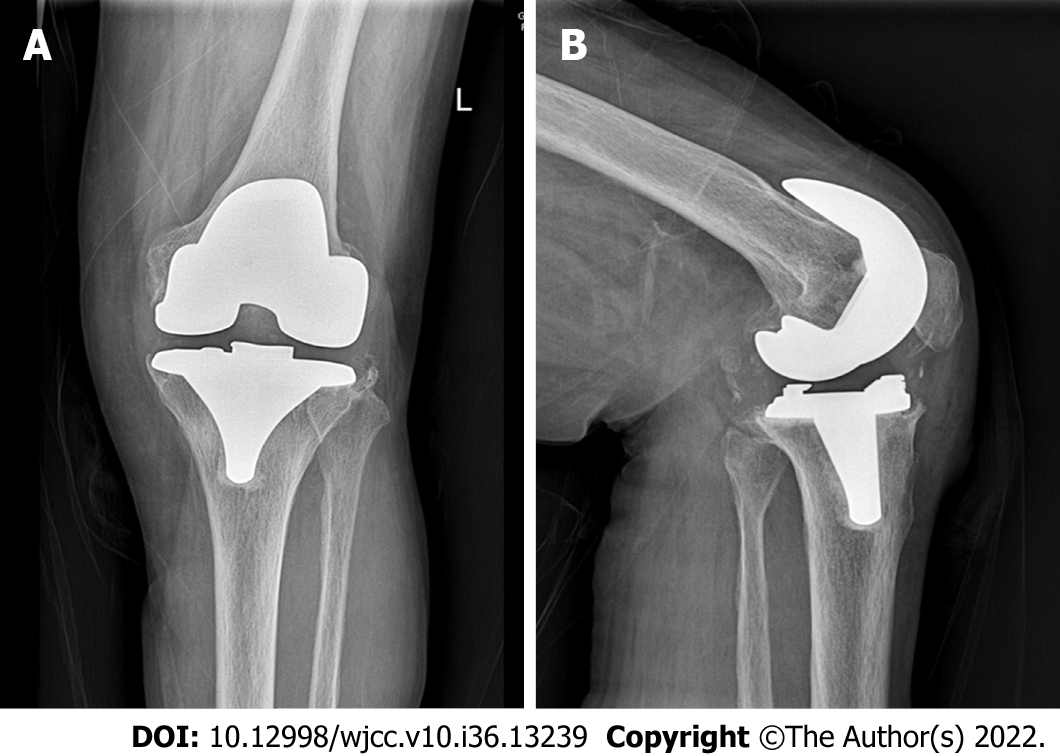Copyright
©The Author(s) 2022.
World J Clin Cases. Dec 26, 2022; 10(36): 13239-13249
Published online Dec 26, 2022. doi: 10.12998/wjcc.v10.i36.13239
Published online Dec 26, 2022. doi: 10.12998/wjcc.v10.i36.13239
Figure 1 A 78-year-old female patient with periprosthetic joint infection after left knee arthroplasty.
Radiographic image of the left knee joint showing good position of the prosthesis without significant loosening. A: Anteroposterior; B: Lateral.
Figure 2 A 78-year-old female patient after one-stage debridement, implant removal, and antibiotic bone cement spacer exclusion.
A: Appearance of the infected skin around the prosthesis after left knee arthroplasty with sinus canal formation; B: Complete debridement after prosthesis removal; C: After the placement of antibiotic bone cement placeholders, the space is moderate; D and E: Radiographic images of the left knee after exclusion: Anteroposterior (D) and lateral (E); F: Pathology showing chronic suppurative inflammation.
Figure 3 Radiographic image of the left knee of a 78-year-old female patient after phase II revision.
A and B: Radiographic images of the left knee after revision: Anteroposterior (A) and latera (B); C: Full-length orthotopic position of the lower limbs after revision; D and E: Radiographic images of the left knee 2 yr after revision: Anteroposterior (D) and lateral (E).
Figure 4 A 51-year-old female patient with periprosthetic joint infection after right knee arthroplasty.
A and B: Radiographic images of the right knee arthroplasty: Anteroposterior (A) and lateral (B); C and D: Radiographic images of the right knee after exclusion: Anteroposterior (C) and lateral (D); E and F: Radiographic images of the right knee after revision surgery: Anteroposterior (E) and lateral (F); G and H: Radiographic images of the right knee 2 yr after revision: Anteroposterior (G) and lateral (H).
- Citation: Qiao YJ, Li F, Zhang LD, Yu XY, Zhang HQ, Yang WB, Song XY, Xu RL, Zhou SH. Analysis of the clinical efficacy of two-stage revision surgery in the treatment of periprosthetic joint infection in the knee: A retrospective study. World J Clin Cases 2022; 10(36): 13239-13249
- URL: https://www.wjgnet.com/2307-8960/full/v10/i36/13239.htm
- DOI: https://dx.doi.org/10.12998/wjcc.v10.i36.13239












